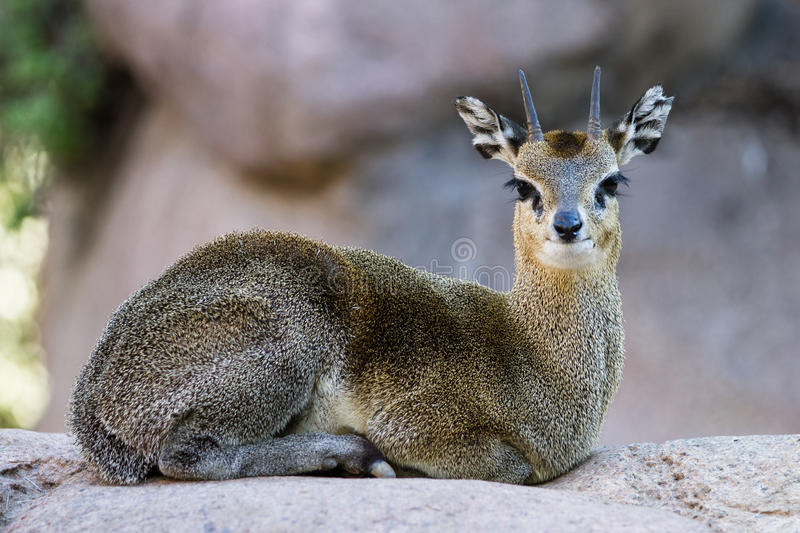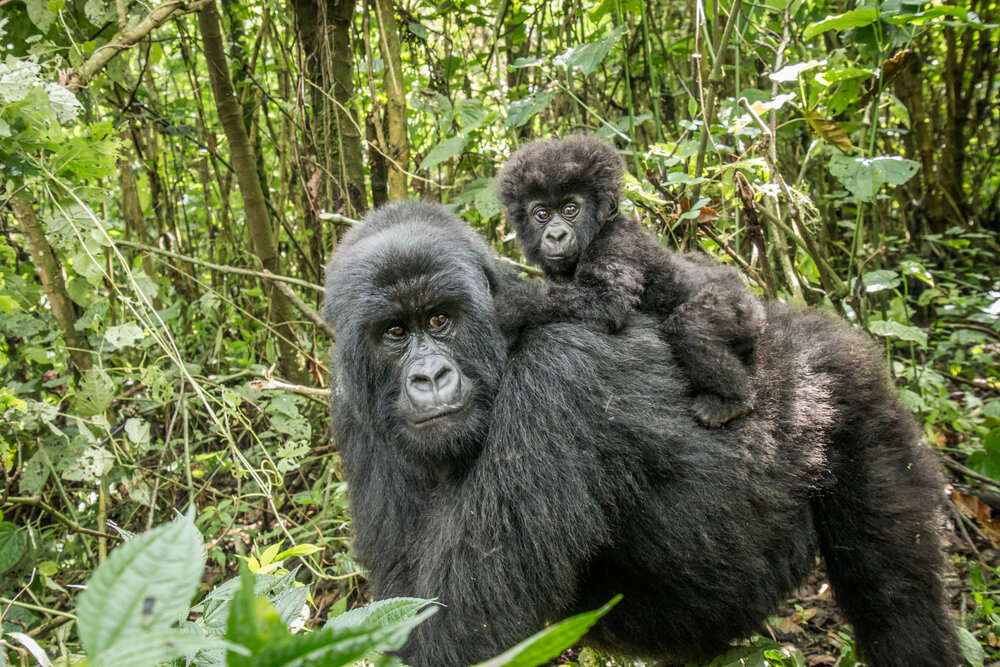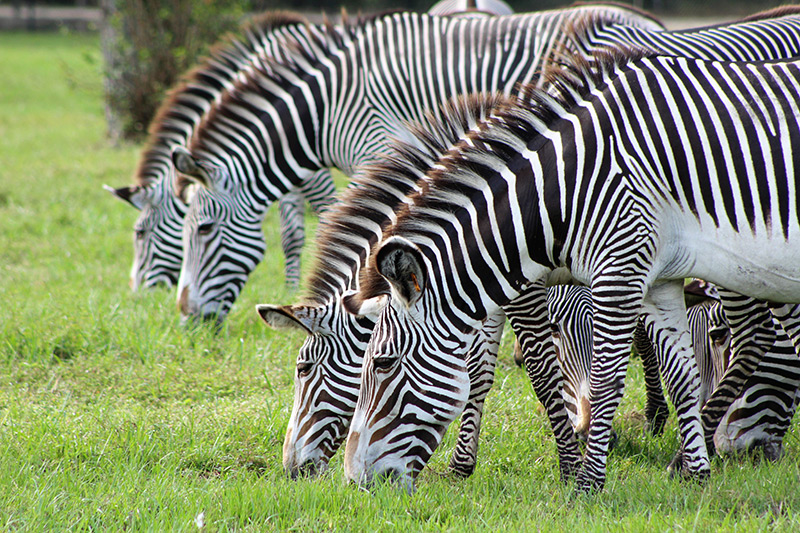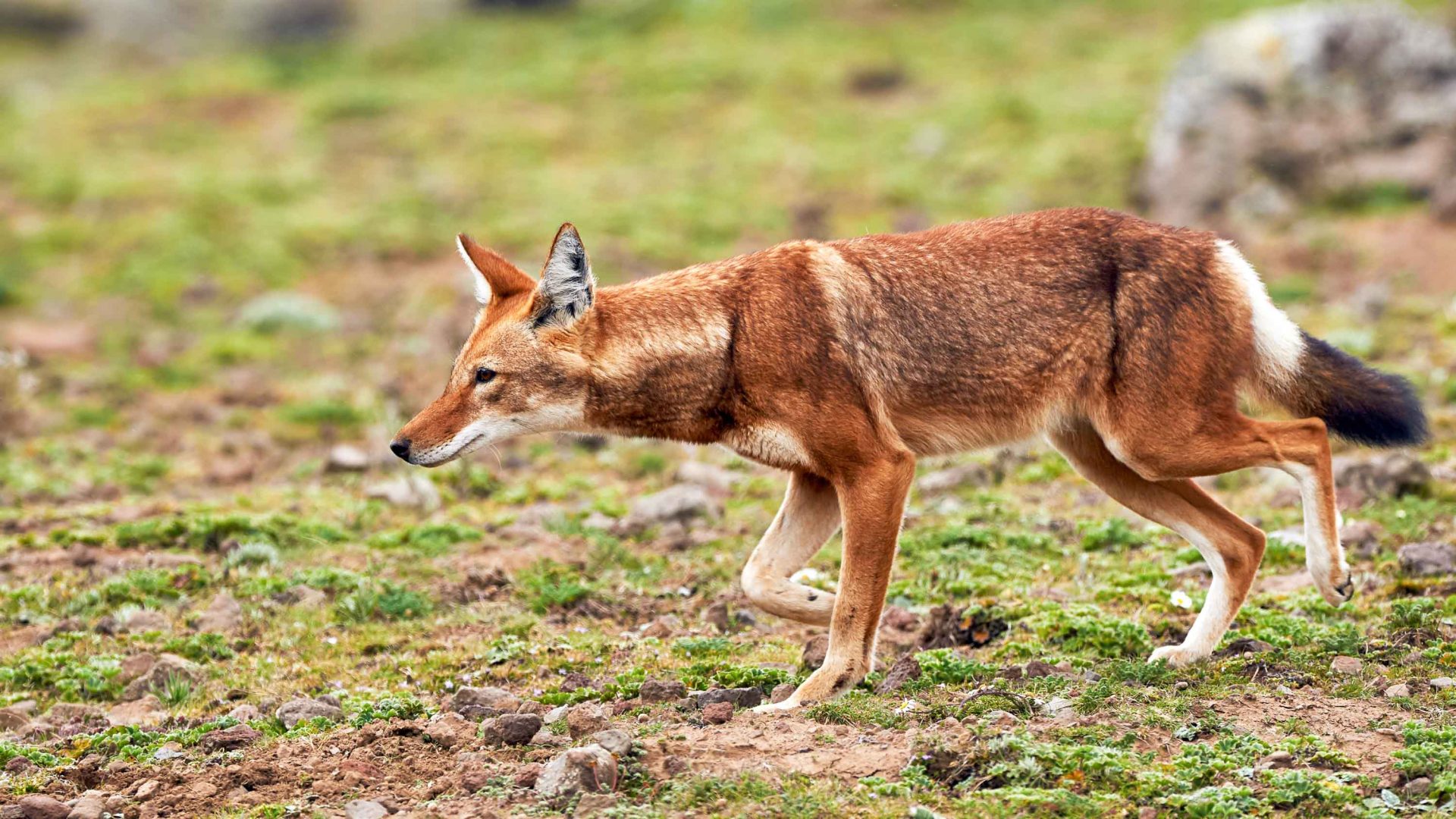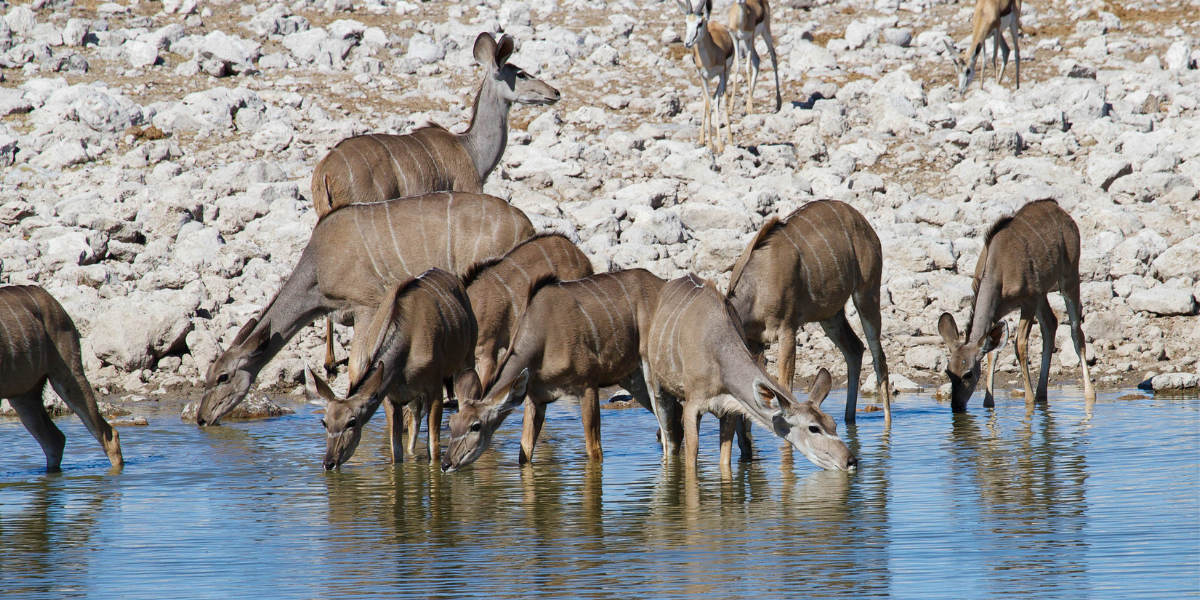There are many beautiful creatures on earth. We started learning about animals in school and in our textbooks - and now we can look at them in their natural environment from the comfort of our homes, thanks to educational programs such as National Geographic and Animal Planet. There are many beautiful creatures on earth. We started learning about animals in school and in our textbooks - and now we can look at them in their natural environment from the comfort of our homes, thanks to educational programs such as National Geographic and Animal Planet.
Find out the solid facts about endangered African species that you may see on wildlife trails in Africa. This is a quick view of where you can see these rare wildlife and how many endangered species are left in Africa. Also, find out the status of each endangered species, according to the IUCN Red List of Threatened Species.
In this article, you will find the information about 17 rare African animals that you didn't even know existed.
- African Penguin
- Mountain Gorilla
- Chimpanzee
- Grevy's Zebra
- Black Rhino
- Riverine Rabit
- Ethopian Wolf
- Pickersgrill's Reedfrog
- African Wild dog
- Kilpspringer
- Grey crowned crane
- Greater kudu
- Lelwel hartebeest
- Pangolin
- White Rhino
- Rothchild's Giraffe
- Hooded vulture
1) African Penguin
The African penguin is covered with a thick layer of black, white, and gray, waterproof feathers that keep them dry and warm in the cold coastal waters of Africa. They also have a dot-like marker sentenced on their white chests. These species help to distinguish each penguin, as the feather pattern of each penguin resembles human fingerprints. African penguins have a sharp, pointed beak and black feet. The African penguin is one of the smallest species of penguin. Males are usually larger than their female counterparts.
2) Mountain Gorilla
The biggest threats to the survival of the once giant gorilla come from political instability, human encroachment, and deforestation. Only about 1,000 of these large gorillas remain in the wild, according to a recent census. Their sanctuary in Virunga National Park is fertile and rich in biodiversity, making it one of the most populous regions in Africa. As humans approach these endangered gorillas, they also pose a risk for human diseases such as the flu, pneumonia, and even Ebola. Population growth and ongoing human encroachment pose major threats to the habitat of gorillas.
3) Chimpanzee
This great Chimpanzee is one of our closest relatives, sharing with us about 98 percent of its genes. They have thick bodies with short legs, protruding thumbs, no tails, and long arms that are 1.5 times longer than the knees. Most of their bodies are covered with long black hair, but the face, ears, fingers, and toes are not worn. Although bushmeat has long been a popular source of dietary protein in local communities, the level of hunting has increased dramatically, and work has become increasingly popular with more meat now being exported to urban dwellers.
4) Grevy's Zebra
The long-legged, endangered Grevy’s zebra is the largest wild equid. It is distinguished by its unique lines, which are as distinct as human fingers. The brown calves have reddish-brown stripes, and their coats are gradually darker and darker. Grevy’s is more closely related to the wild donkey than the horse, while the plain zebra is more closely related to the horse. Grevy is also tall, has large ears, and has smaller lines than plain zebras. They are great breeds of zebras.
5) Black Rhino
Image Source - Google | by CGTN
Black rhinos have experienced a significant decline in all species of rhinos. Between 1970 and 1993, the number of black rhinos dropped by 96% from about 65,000 to only 2,300 wild survivors. Since 1996, intensive efforts to combat poaching and the transfer of technology to safer areas have allowed the animals to recover slowly and increase in size. illegal hunting still appears to be a major threat.
6) Riverine Rabit
Riverine Rabbit is an endangered species of African rabbit and lives in the desert. It is native to South Africa and has been suffering from habitat destruction for many years. Very few are left, and their return is hampered because they are one of the few species of rabbits that do not produce much offspring. Join us as we explore this genre to learn interesting facts about it to see if you can possibly find your own home.
7) Ethopian wolf
The Ethiopian wolf is a close relative of the gray wolf and the coyote that encircles the African horn by land bridges. Ethiopian wolves are found only in the highlands of Ethiopia and are the most endangered carnivorous animals in Africa. Thin and long legs with a reddish-brown coat and a forested tail, the small mouth of an Ethiopian wolf and small, separately divided teeth that help catch small prey that hunts in the open or digs in their burrows. Ethiopian wolves live in close quarters of 18 adults, with a strict system. They gather for greetings and patrols in the morning, during the day, and in the evening and rest together at night.
8) Pickersgrill's Reedfrog
Image Source - Google | by
Safari
Pickersgill’s Reed Frog, Hyperolius pickersgilli, is found only in the KwaZulu-Natal Province of South Africa, where it occupies only a small area of coastal wetlands. It is the smallest species, measuring 30 mm (slightly more than 1 inch) for females. The dwarf reed frog changes dramatically from young to old. Babies are pale brown to green, while older women and other males have a brighter green, often with distinct yellow and white stripes. Pickersgill’s Reed Frog is listed as a ‘Critical Danger’ on the IUCN Redlist of Threatened SpeciesTM due to its very small habitat, measuring only 9 km2. There are many different threats to the area, including urban development, the use of the pesticide DDT to control mosquitoes, and the extraction of water for agricultural purposes.
9) African wild dog
African wild dogs are not wolves or dogs, despite their common English names, and the fact that their scientific name, Lycaeon pictus, is translated as 'painted wolf'. Like wolves and dogs, African wild dogs belong to the Canidae family. However, gray wolves, coyotes, dogs and foxes are all native to Canis, while African wild dogs are the only surviving (living) species in the Lycaeon species. Previous research has included wild dogs with holes and forest dogs. However, studies have shown that morphological similarities between these species are no longer considered to show the same interest between species of animals.
10) Kilpspringer
It has strong hair made of thin, brittle hair ranging from gray, brown, and yellow to green, making kilpspringer look wrinkled. This type of wool protects it from the scorching heat. The abdomen, chin, area around the lips, and inside of the ears are pale to white. It has a solid structure and a well-developed background. Its hooves are small, almost smooth which makes it look like it is standing on tiptoe. Short spikey horns from male head; both sexes have horns in some societies, about 6 inches (15 inches) long.
11) Grey crowned crane
A handsome crane, usually blue-gray with a black and white face and a gold-yellow puppies crown. Immatures are rustier than adults. Single people, pairs, and herds prefer swampy areas, floodplains, and man-made wetlands, but they can also migrate extensively to other open areas in search of food. A citizen however can be violent in the area due to rain. Groups can often be found with their low-key “maaah-hem” call. The same Black Crown-Crane differs in slaty-gray, small red face wattles, and red-and-white (rather than white cheeks).
12) Greater kudu
The Great Kudu is a large, dark-colored deer with small, white, straight lines. The large kudu may be distinguished by the same species, the smaller kudu (Tragelaphus imberbis), by the presence of a throat mane. The male has long black twisted horns. Females do not have horns, they can stay long without drinking, get enough moisture from their food, but rely on water at times when the plants are very dry. Their diet may include leaves, grass, roots, and sometimes fruit and root crops.
13) Lelwel hartebeest
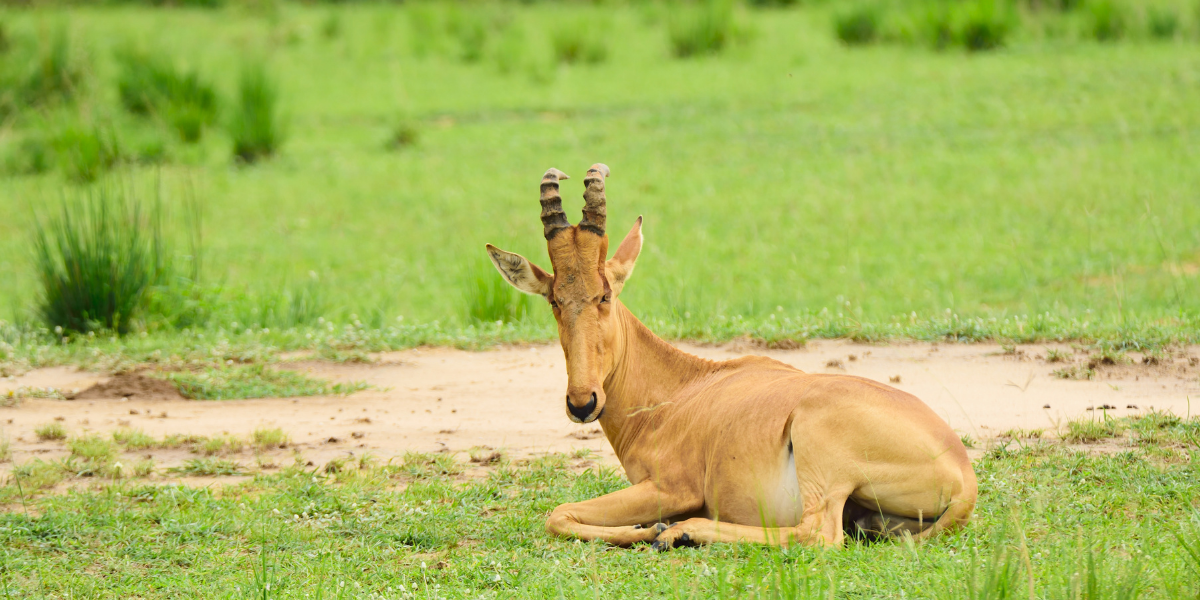
The hartebeest can be divided into eight subspecies of the bovid family. The Lelwel hartebeest, also known as the Jackson's hartebeest, can reach up to five feet in height and weigh 165-350 pounds depending on the males. Although the Lelwel hartebeest belongs to the antelope family, it can be easily distinguished by its long face, large chest, and crooked back. Both males and females have horns, but females have smaller horns. The overall shape of the horns varies between the smaller species but the Lelwel hartebeest has long horns that look Z-shaped from the side and V-shaped at the front.
14) Pangolin
These mammals feed on ants and termites with an unusually long, sticky tongue, and they can quickly roll over into a solid ball when threatened. Eight different types of pangolin can be found in Asia and Africa. Poaching for the purpose of trafficking in wildlife and the loss of habitat have made these amazing animals one of the most endangered mammals in the world.
15) White Rhino
The white rhinos see higher levels of poaching than black rhinos, especially in the Kruger National Park of South Africa, mainly because they often live in open areas where they are easily identified. Sadly, from 2012 to 2017, poaching has led to a decline in the number of white rhinos by more than 15 percent. The white rhino, along with the equivalent of a horned Greater one-horned rhinoceros, is a major mammal that follows the elephant. It has two distinct species, but only the southern white rhino population (Ceratotherium simum simum) survives. The white northern rhinoceros (Ceratotherium simum cottoni) is no longer in the wild due to poaching and only two females remain incarcerated.
16) Rothchild's Giraffe
The Rothschild giraffe, also known as the Baringo or Ugandan giraffe, is a type of Northern giraffe. It was named after a London zoologist, Lionel Water Rothschild, who first described the species in the early 1900's. The giraffe is the longest mammal in the world and the Rothschild giraffe is one of the tallest of all species, growing up to 6m tall. Its color is different from that of other giraffes as its markers stand halfway up. Giraffes live in small herds with males and females living separately from each other during the breeding season. Females give birth to a single calf after a gestation period of about 15 months.
17) Hooded vulture
This vulture is listed as endangered. Recent evidence suggests that the population is experiencing a rapid decline due to indiscriminate poisoning, the trade in traditional medicine, hunting, persecution and electrocution, and the loss of shelter and vandalism. These small birds have a gray face and a brownish tinge on the back of the neck. When flying, beware of round tails and silver feathers. They are rare and descending but are spread over open country, forest edges, and cities. As it spreads it is easily removed from the carcasses by large and vicious vultures.
